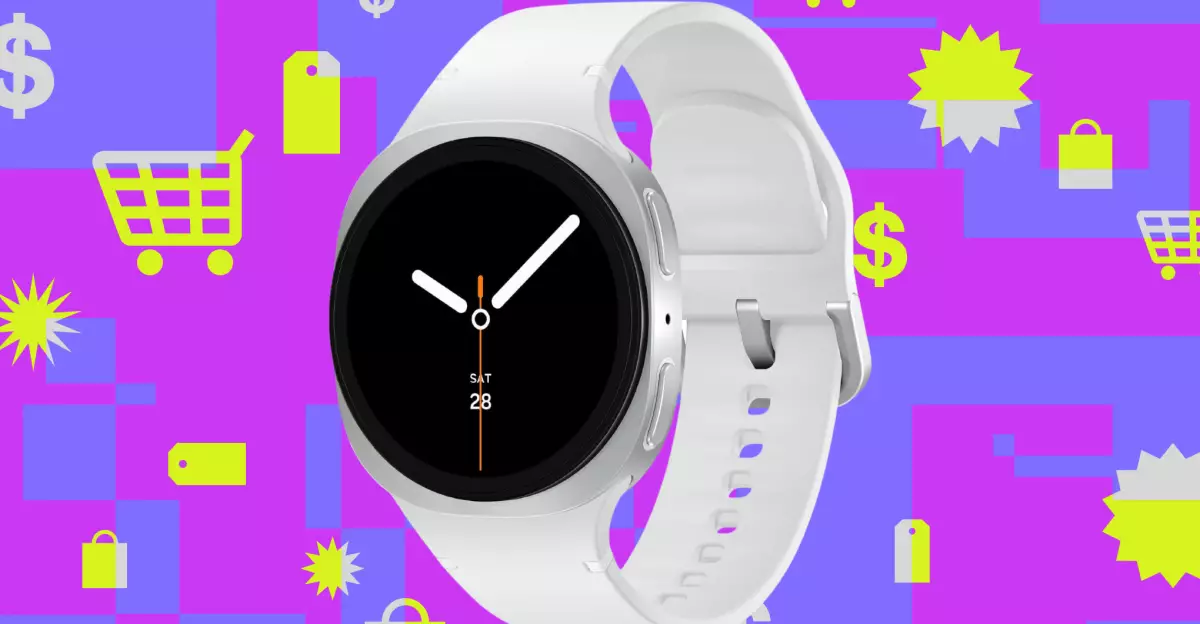In a landscape crowded with wearable devices, Samsung’s Galaxy Watch 8 emerges not just as another fitness tracker but as a versatile companion that seamlessly integrates health, AI, and design innovation. The new squircle shape, which may initially seem radical, actually highlights Samsung’s courage to challenge conventions. Unlike traditional round or rectangular smartwatches, the squircle model offers a flatter profile, promising enhanced comfort and functionality. The slight departure from standard shapes signifies Samsung’s understanding that form must serve function—yet it also invites debate on aesthetics versus practicality.
What truly sets the Galaxy Watch 8 apart is its embrace of Google’s Gemini AI directly on a wristwatch, a move that blurs the line between mobile device and personal assistant. Being able to check the weather, create playlists, or even inquire about culinary tips from such a compact device exemplifies the convergence of AI and wearables. However, it’s not merely about convenience; it’s about redefining what we expect from wearable tech—turning it into an extension of our cognition.
From a health perspective, Samsung’s addition of features like an Antioxidant Index and a Running Coach points to an era where smartwatches are becoming health-centric tools. These features do more than count steps—they provide actionable insights and personalized workouts. Nonetheless, their reliance on sensors that can be fooled by commonplace objects highlights an ongoing challenge: ensuring that health data is valid and trustworthy. Samsung’s ability to create a device that balances style, explicit AI integration, and health features demonstrates a forward-thinking approach, yet also exposes the perennial issue of technological overreach—are these features more gimmick than game-changer?
The price point, despite a recent increase, remains competitive, especially with Samsung’s discounts. The 40mm model for $299.99 and the 44mm version at $379.99 reflect a calculated effort to appeal to a broad audience. In relation to competitors, Samsung seems to recognize that affordability paired with innovation is essential for broader adoption, particularly among users transitioning from older models like Galaxy Watch 5.
Gaming and Audio: Elevating Experience with High-Performance Accessories
Gaming has evolved significantly, with accessories becoming essential for serious players. The GameSir Super Nova Wireless Controller exemplifies this shift—offering high-end features at an accessible price. With drift-resistant Hall Effect joysticks, multiple connectivity options, customizable back buttons, and RGB aesthetics, this controller positions itself as a versatile tool for Switch, PC, Android, and iOS gamers alike. It suggests that gaming peripherals are no longer just tools but statements—blending form, function, and personality.
The balance of wired and wireless connectivity makes the Super Nova particularly appealing, facilitating seamless transitions between devices. Its polling rate of 1000Hz demonstrates a commitment to precision—crucial in fast-paced gaming scenarios. Yet, one might argue that while such features are impressive for the price, they also raise questions about durability and long-term performance. Do budget-friendly controllers like this genuinely stand the test of time, or are they temporary indulgences?
Meanwhile, audio gadgets like JBL’s Tour Pro 3 earbuds exemplify how premium sound experience is no longer a luxury but an expectation. The remarkable $80 discount underscores that high-quality wireless earbuds are becoming more accessible, contrary to the belief that premium audio comes only at a premium price. The earbuds’ active noise cancellation, comfortable fit, and innovative charging case with a touchscreen showcase the height of consumer convenience and technological integration. It demonstrates that audio devices are, increasingly, mini-computers themselves—offering control, customization, and connectivity all in one small package.
The standalone ability of the case to act as a USB-C audio receiver underscores a shift toward universal compatibility. This level of versatility suggests that gadgets are no longer designed solely for specific functions but for adaptability in an increasingly interconnected digital environment.
Practical Power Solutions: Affordable Chargers with a Personality
In a world flooded with chargers, Ugreen’s Uno 30 Watt Charger stands out—not merely for its affordability but for its playful design. For just around $17.99, users get a fast-charging device capable of powering an iPhone to 60% in just half an hour. The inclusion of a pixelated face display on the LED screen exemplifies the trend of infusing personality into everyday gadgets. This may seem superficial, but it signifies a move toward making tech more relatable and engaging—a stark contrast to the sterile, utilitarian chargers of the past.
The device’s compact form and fast charging capabilities reflect the modern obsession with efficiency and portability. Such gadgets challenge the notion that practicality must sacrifice personality, suggesting that even mundane devices can become expressions of individual taste. However, this also raises questions about longevity and durability—can a cheerful design overshadow potential wear and tear over time?
Ultimately, these affordable accessories highlight a broader trend: democratizing advanced technology without sacrificing style or convenience. As gadgets become more user-centric and playful, consumers are invited to see tech not just as utility but as an extension of personality.
The convergence of stylish design, cutting-edge AI, health-centered features, and affordable yet high-quality accessories signals a seismic shift in how we integrate technology into daily life. From smartwatches that blend fashion with wellness to gaming controllers that enhance the thrill of play, the landscape is increasingly about personalized, intelligent, and multifunctional gadgets. This era champions the idea that technology should serve us better—more intuitively, more affordably, and with an added dash of personality. As these devices continue to evolve, they won’t just change our routines—they will redefine our very understanding of connectivity and self-expression in the digital age.

